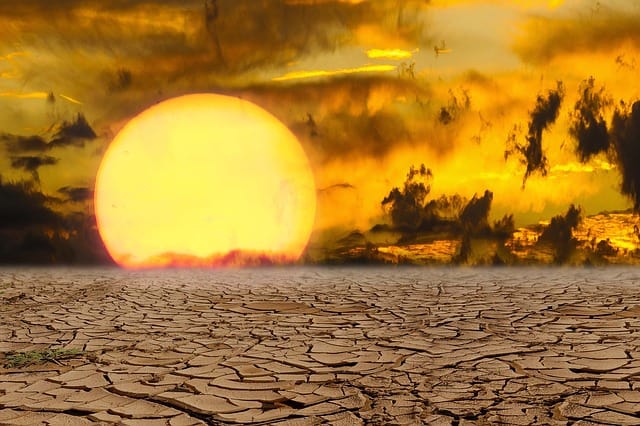Australia has been under continuous threat for record-breaking hot days due to the heat wave. Bureau of Meteorology announced, Australia’s heat wave enters the fourth day among the ten hottest days on record in the country as temperatures soar making it difficult to cope with the extreme heat.
The town Port Augusta in South Australia reached 48.9 degrees Celsius (approx 120 degrees Fahrenheit) on Tuesday breaking the record of highest temperature since records began in 1962. White Cliffs and Fowlers Gap in New South Wales and Meekatharra in Western Australia broke minimum temperature records reaching 33 degrees Celsius (approx 91.4 degrees Fahrenheit) overnight on Monday as per the report of The Guardian.
A senior meteorologist Dean Sgarbossa, Bureau of Meteorology told The Guardian
“It’s quite a significant heatwave because we are expecting a number of records to fall across those areas for both minimum and maximum temperatures.”
South Australia, Western Australia, Victoria, Tasmania, Australian Capital Territory, and New South Wales could see maximum temperatures 8 to 12 degrees Celsius (approx 46.4 to 53.6 degrees Fahrenheit) above average. Some areas could see even temperatures as high as 16 degrees Celsius (60.8 degrees Fahrenheit) above average end of this week. The parts of South Australia, Victoria, and New South Wales could even break heat records of January extending up to daytime maximums of the mid-40s within this Friday.
“The entirety of the state of NSW will experience severe heatwave conditions for the majority of this week,” Sgarbossa said.
The high temperatures already started affecting the health of humans and wildlife. The Australian Associated Press reported about sixteen people to arrive at emergency departments in South Australia, and seven admitted. The housing authority of South Australia declared a “code red” for greater metropolitan Adelaide until 16 January. A code red means that during the hot weather homelessness agencies will extend their services and also operating hours.
A service of Red Cross, the TelecrossREDi service, makes phone calls daily during heat waves to support vulnerable people activated through Thursday, The Guardian reported. The list includes 750 of the South Australians to receive calls during that time.
Paddy Phillips, Chief Medical Officer of South Australia, told The Australian Associated Press “Heat is the worst of our natural emergencies with excess hospital presentations, ambulance transfers, and even people potentially dying.”
In the meanwhile, health officials warned that the high temperatures could lead to more than normal ozone air pollution in New South Wales and impact on people with asthma or other respiratory ailments could be severe.
Dr. Richard Broome, Director of Environmental Health at New South Wales Health cautioned “Anyone experiencing severe respiratory distress should seek immediate medical help.”
The adverse effect of high temperature on plants and animals is also significant, and they are suffering, CNN reported. More than a million fish found dead on the banks of the Murray-Darling River Basin. However, environmentalists said this is partly because of too much of the river water used in agriculture.
“A lack of water in the Darling River and the Menindee Lakes means that authorities were unable to flush the system before millions of fish suffocated through a lack of oxygen in the water,” Jeremy Buckingham, an independent lawmaker at New South Wales said to CNN in a statement.
In Adelaide bats are falling from trees and stone fruits such as peaches and nectarines started ripening from inside resulting into the disaster for farmers.
Kris Werner, Chairman of Dried Tree Fruits Australia told ABC as per CNN report “The stone burns them, which means they burn on the inside, they become squashy and you can’t use them.”
John Nairn, Regional Director for South Australia, Bureau of Meteorology, said this is for the second time within weeks as another broke record between Christmas and New Years, and they were related.
“Since then we have not had a weather event that has pushed the hot air out of the continent, and it’s been recirculating back and forth,” Nairn told The Australian Associated Press. “It’s basically a very large pool of air that’s been building, and that’s not being shed.”
Climate change contributed to the rise of the frequency and severity of heat waves in Australia in the long run. The Bureau of Meteorology and Commonwealth Scientific and Industrial Research Organization disclosed in The State of the Climate 2018 report that climate in Australia had already warmed one degree Celsius and more since 1910.
“It’s harder to feel that change in the average climate, but we certainly see and feel the change in extreme events, which blows through to those really record-breaking temperatures that we see in capital cities and elsewhere,” Dr. Karl Braganza, Manager of Climate Monitoring, Bureau of Meteorology told SBS News in December.
Fire danger ratings elevated for most parts of the country on Tuesday and that would continue through the week. There were 20 active grass, scrub, and bushfires in the state. Authorities had to issue warnings about the disturbing activity of people lighting campfires and breaking total fire bans. Seven aircraft and more than 20 trucks were at the grass and scrub fire that went out of control and threatening property at Benloch, northeast of Macedon.






